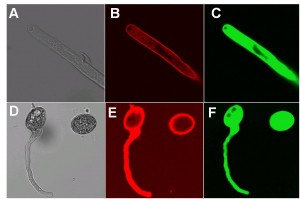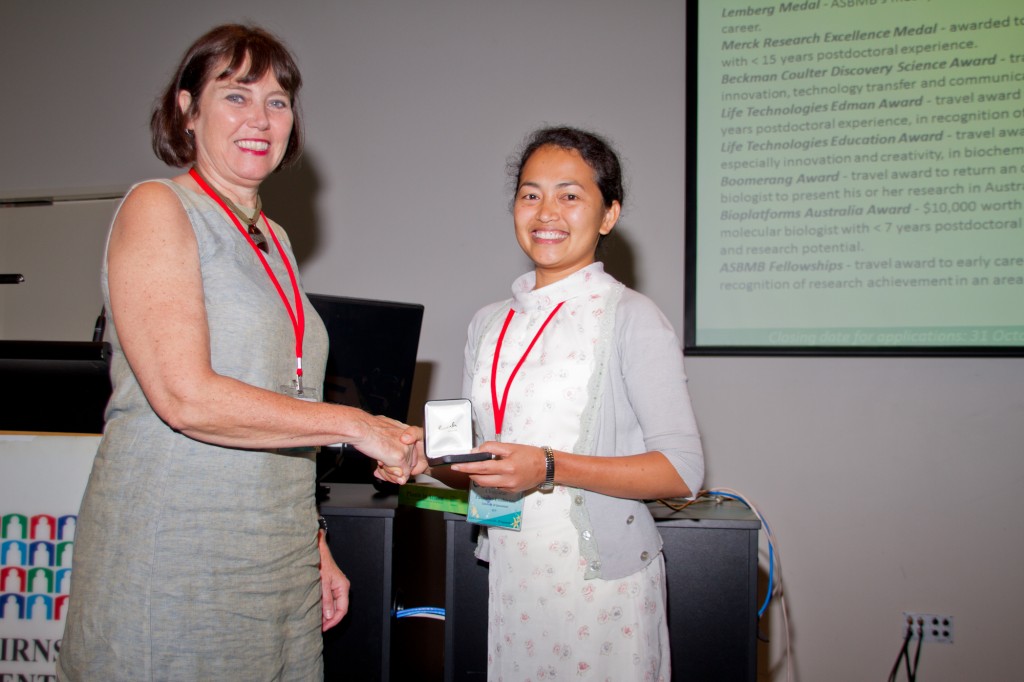Chanyarat Paungfoo-Lonhienne from the University of Queensland was awarded the Goldacre Medal in 2011 for her innovative and significant work on organic nutrients and plant nutrition and gave a very impressive plenary talk. Chanyarat has provided the following comment on the context of her research.
Increased application of fertilisers, improved crop varieties and agronomic practices enable today’s high-yielding crop production. However, these advances come at great cost. Environmental pollution with reactive nitrogen is considered a global problem. It is a formidable challenge to transform crop production to reduce pollution and dependency on energy-intensive fertiliser production and finite natural resources, while increasing food production for a growing human population. What practices can deliver high crop yields at low environmental costs? One avenue may be to decrease reliance on synthetic and mineral fertilisers by successfully incorporate organic nutrients into agriculture. Evidence is emerging on the ability of plants to access organic forms of nutrients and to undergo physiologic changes in order to optimise this process. There is much opportunity to successfully incorporate organic nutrients to improve nutrient use efficient agriculture, but knowledge has to be obtained to ensure optimal use by crop systems. My research aims to produce fundamental knowledge in this area of plant nutrition.

Uptake of Cy3-labeled S-DNA by Arabidopsis root hairs (A-C) and pollen tubes (D-F). Bright field images are shown (A and D) for root hairs and pollen incubated with Cy3-S-DNA (B and E) and fluorescein diacetate (C and F) indicating cell viability
The Peter Goldacre award is very much rewarding and is encouraging me to continue on this path of research. I would like to sincerely thank ASPS for giving me an invaluable opportunity of receiving this prestigious award.
-
Contact Dr. Chanyarat Paungfoo-Lonhienne
- E-mail: chanyarat@uq.edu.au
- URL:
- Researchgate: https://www.researchgate.net/profile/Chanyarat_Paungfoo-Lonhienne
- Twitter:
- Facebook:
-
References
Paungfoo-Lonhienne C., Lonhienne T.G.A., Mudge S.R., Schenk P.M., Christie M., Carroll B.J., Schmidt S. (2010). DNA is taken up by root hairs and pollen, and stimulates root and pollen tube growth. Plant Physiol, 153, 799-805.
Paungfoo-Lonhienne C., Schenk P.M., Lonhienne T.G.A., Brackin R., Meier S., Rentsch D., Schmidt S. (2009). Nitrogen affects cluster root formation and expression of putative peptide transporters. J Exp Bot 60, 2665-2676.
Paungfoo-Lonhienne C., Lonhienne T.G.A., Rentsch D., Robinson N., Christie M., Webb, R.I., Gamage H.K., Carroll B.J., Schenk P.M., and Schmidt S. (2008). Plants can use protein as a nitrogen source without assistance from other organisms. Proc Natl Acad Sci USA 105, 4524-4529.

